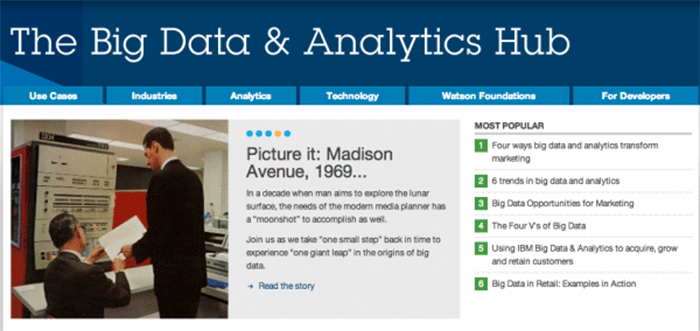One of the things that struck me most when I started Switch Digital was the reluctance of some clients to let go of their age-old issues with allowing some freedom around their marketing.
I spent the best part of a decade working in publishing, mainly on the editorial side. Some advertisers would insist on getting some content with their advertising. One of the things I always tried to explain to them was that if they tried to build a voice of authority around their brand rather than using their space to force useless information down the throat of readers, they would get much more bang for their buck.
This issue is amplified in the digital age. You can’t just hope that someone will pick up a magazine in a waiting room and read about how your range of canopies includes 58 colours that are available in 4 different materials. That person is browsing Facebook as they wait for their dentist to call them in.
People have much less time to read about your brand
In fact, they have nearly no time to read about any brand at all (with the exception of a handful of brands that has achieved superstar status). Just like you are only interested in your products and services, people are only really interested in one thing: their lives
The difference is that customers are entitled to only be interested in themselves. You, as a brand, are not (well, unless you want to fail). To succeed online, you need to be able to think in terms of what you can offer to your customers. You need to have a long and hard think about what they need and how you’re going to solve it.
To succeed online, you need to be able to think in terms of what added value you can offer to your customers.
Now I hear you screaming: But my customers need to know that I have 58 colours of canopies in 4 different materials! So my marketing strategy should work after all. Well, if I needed a canopy right now, I would benefit from that particular tidbit of information, but you’ve taken no extra benefit compared to traditional advertising. You’re screaming out a message to 10,000 people in the hope that 10 of them need to receive it.
We believe in online advertising. We’ve run some very successful campaigns that saved our customers thousands of Euros. But there is more to online marketing than simple advertising. If you just want to use the internet like you use current media, then I’m pretty sure you can do so and save money too, but what we’re proposing here is an improvement.
Content marketing allows you to shift your advertising spend from a direct cost into a long-term investment. Rather than simply placing direct response ads that get people to act immediately on instinct, you could be putting your money in building long-term relationships with clients.
And how do you do this, I hear you ask?
Stop talking about your brand. Start talking around it
Once again I can go back to my days in publishing. The companies who saw the light were the ones coming to us with offers to give us content that was interesting. Content that we wanted to publish. Content that, as a publisher, I would usually have paid for.
As a content marketer, that should be the kind of material you should be producing. As a customer I’d want to see that you have a knowledge of the business that goes beyond the product you’re producing. I want to see that you care about the industry you’re working in. I want to see that you can help me make an informed decision. I want to feel comfortable in the knowledge that you are the right person to give my hard-earned cash to because you know what you’re talking about, so I can trust you to have the best choices for me.
You also have to understand that I, your customer, have wants and needs that go beyond your product. I am interested in all the things I can do with it. I want to know how I can get the best out of it, and how I can improve my performance around it.
Here are some examples of people doing content marketing right:
B&Q
Their site contains a wealth of knowledge for DIY enthusiasts that goes beyond the products it sells. It does not simply tell you why you should buy your tools and DIY materials from B&Q, but it helps you become a better DIYer.

IBM
IBM has really understood that marketing around their brand is far more powerful than shouting out about products and features. With great content marketing sites like The Big Data and Analytics Hub (which increased their social referral traffic by 291%) and the Cognitive Computing portal, IBM shows that the line between publishing and marketing is a very fine one indeed.
Hubspot
Hubspot should know a thing or two about content marketing since they are in the business themselves, however they do go beyond the call of duty with the vast wealth of content they publish on a regular basis. They run a very informative blog, they publish ebooks and great marketing resources, they have a fantastic (and somewhat hilarious) youtube channel, and an entire inbound marketing academy. They know their stuff, but they also communicate around it brilliantly. And you’ll never catching them attempting a hard sell.
Red Bull
OK, we can’t all send someone up to space to attempt a skydive nor can we all buy a couple of Formula 1 teams, but the bottom line is simple. Red Bull does those things as publicity stunts that generate thousands of mentions (and links), but you’ll never see them flaunting their product’s ingredients or its unique properties. They just market around the brand in a way that associates it with fun and daring.

Anthropologie
And finally, one of my favourite content marketing efforts around. Anthropologie, which carries women’s clothing, accessories and home decor, runs a blog that shows the brand’s understanding of content marketing for B 2 C. From cocktail recipes to playlists, Anthropologie has understood the importance of building a brand by simply being itself and writing about stuff that’s interesting for their customers in a tone of voice and with an aesthetic that matches the Anthropologie brand perfectly.







